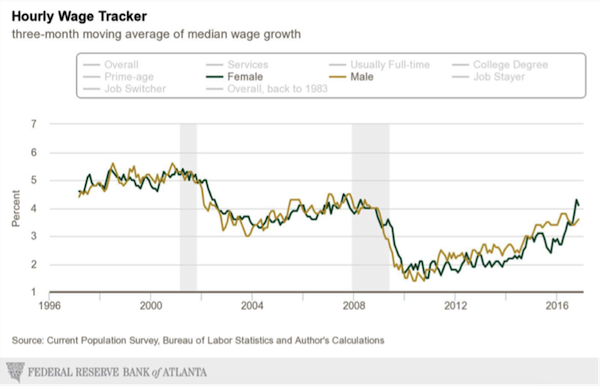The US Wage Data for 2016 Shows an Odd Gender Anomaly
- Patrick Watson
- |
- February 10, 2017
- |
- Comments
BY PATRICK WATSON
The Federal Reserve is pleased to see unemployment falling. It’s one reason they are now taking small steps toward tighter interest rates. Rising wages will be an important signal that inflation is picking up.
We see in this chart from the Atlanta Federal Reserve Bank that wages are indeed rising, but there’s an interesting gender anomaly.

Source: Federal Reserve Bank of Atlanta
The chart shows year-over-year median wage growth for men (gold line) and women (green line). The two lines generally tracked closely from 1996 but started to diverge in 2015.
Female wage growth first fell while male wage growth held steady. Then, in early 2016, female wage growth took off while male wage growth was again relatively flat.
What gives? I suspect it’s linked to the nature of each gender’s job opportunities. Wages may be rising in female-dominated occupations. Those lines are breaking down, but there are still big gender gaps in fields like nursing and social work.
Subscribe to Connecting the Dots—and Get a Glimpse of the Future
We live in an era of rapid change… and only those who see and understand the shifting market, economic, and political trends can make wise investment decisions. Macroeconomic forecaster Patrick Watson spots the trends and spells what they mean every week in the free e-letter, Connecting the Dots. Subscribe now for his seasoned insight into the surprising forces driving global markets.
